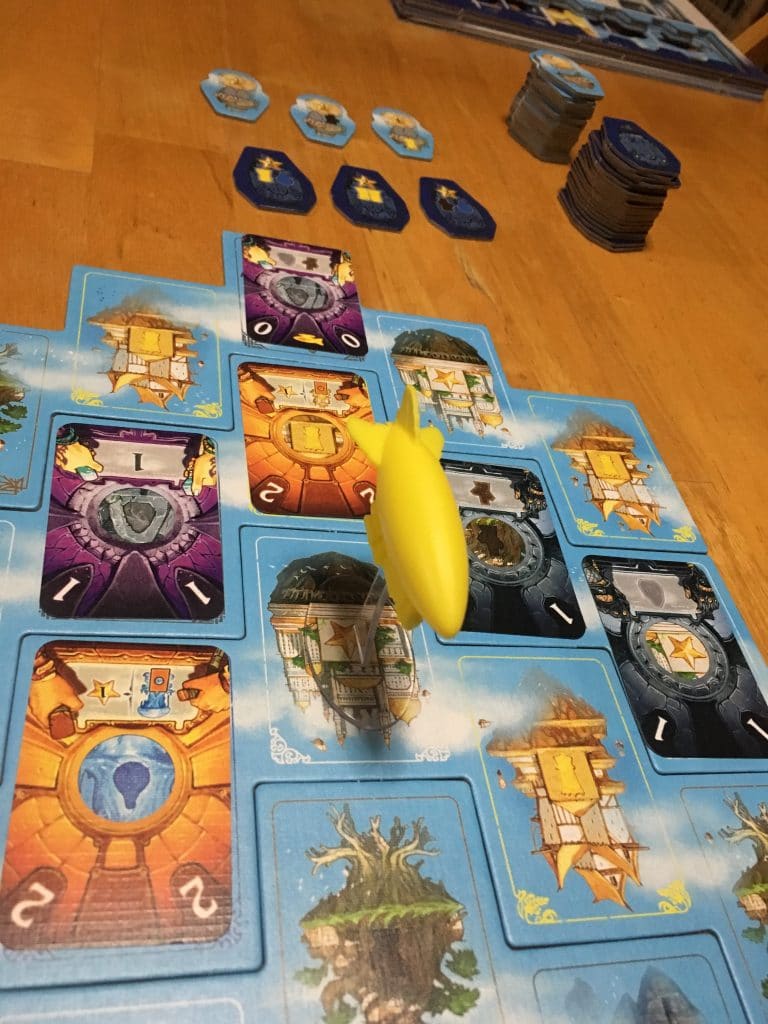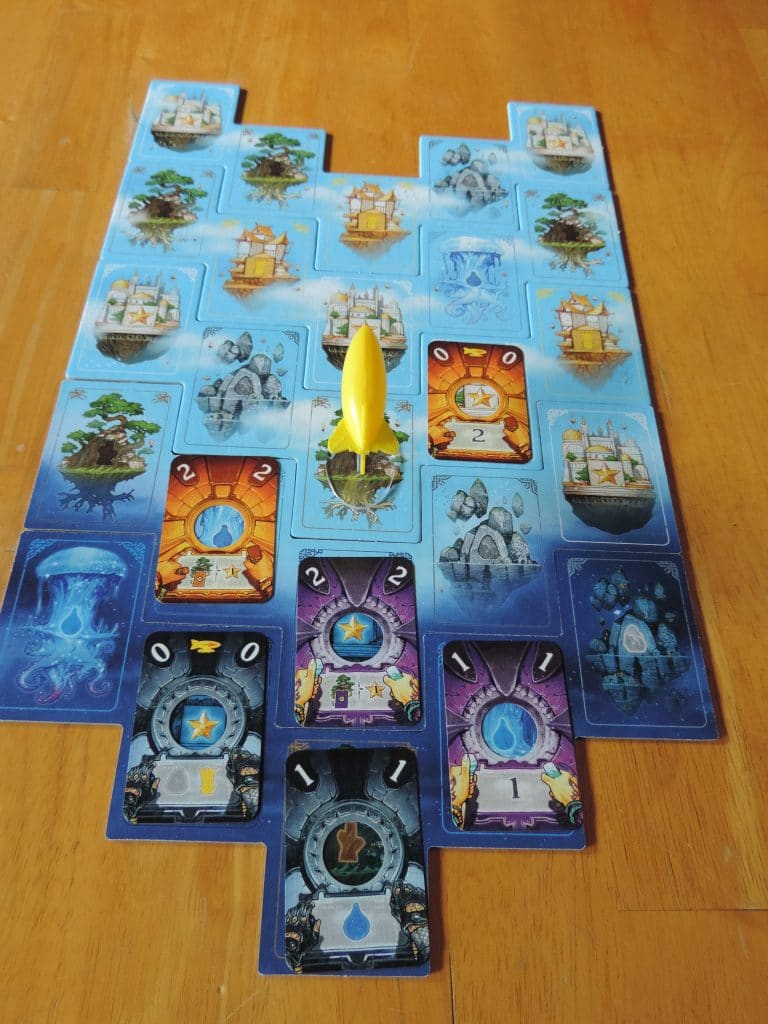The planet Solenia is entirely without a day-and-night cycle. Instead, its southern hemisphere exists in never-ending night while the northern hemisphere is bathed in ceaseless sunshine.

The northerners are in constant need of rock and water; resources found in greater abundance so the south. Likewise, the unbroken darkness of the southern hemisphere makes agriculture commodities like wheat and wood rarities.
This is where you come in! You’re looking to capitalize on this trade economy by transporting goods from one hemisphere of Solenia to the other, but you’re not without competition. Your fellows around the table will be eyeballing the same resources and delivery requests, so you’d better act quickly!
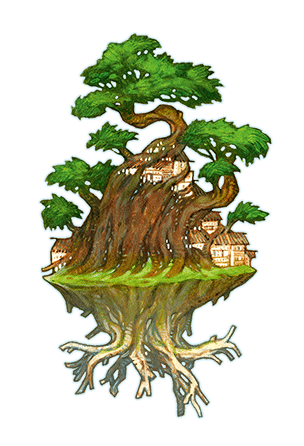 Playing Solenia
Playing Solenia
Solenia plays incredibly simply! Each player (as many as four, but there is a solo mode!) has a deck of 16 cards. Each will play a single card per round and the game is over when the last player’s final card is played.
The cards are placed on an evolving game board – one of the neatest things about Solenia, for sure! When the airship token moves, trigged by a player placing a card with a 0 value on the board, the bottommost tile that comprises the game board is picked up, flipped over, and placed at the top of the board. Any cards that were on that strip when it moves grant bonuses to their owners depending upon the iconography at the bottom.
Cards must be placed on the board either adjacent to the airship or to another card you have already placed on the board. If you place a card on a Floating Production Island, you gain a number of that resource (wood, rock, wheat, or water) equal to the value of your card (0, 1, or 2). If placed on a Floating City, you gain gold stars (this game’s VP) equal to the value of the card.
Additionally, if you place a card on a city spot, you must complete one of the face-up available deliveries: A night delivery if your card is placed on a night city and a day delivery if it is on a day city.
Completed deliveries are placed in the appropriate place on your player board and grant additional resources. Pairs of deliveries (one day and one night) also grant additional VP along with any leftover resources you’ve got on hand at the game’s end.
The player with the most gold stars wins!
![]()
A gander at the player board, resource tokens, delivery tiles, and gold stars. 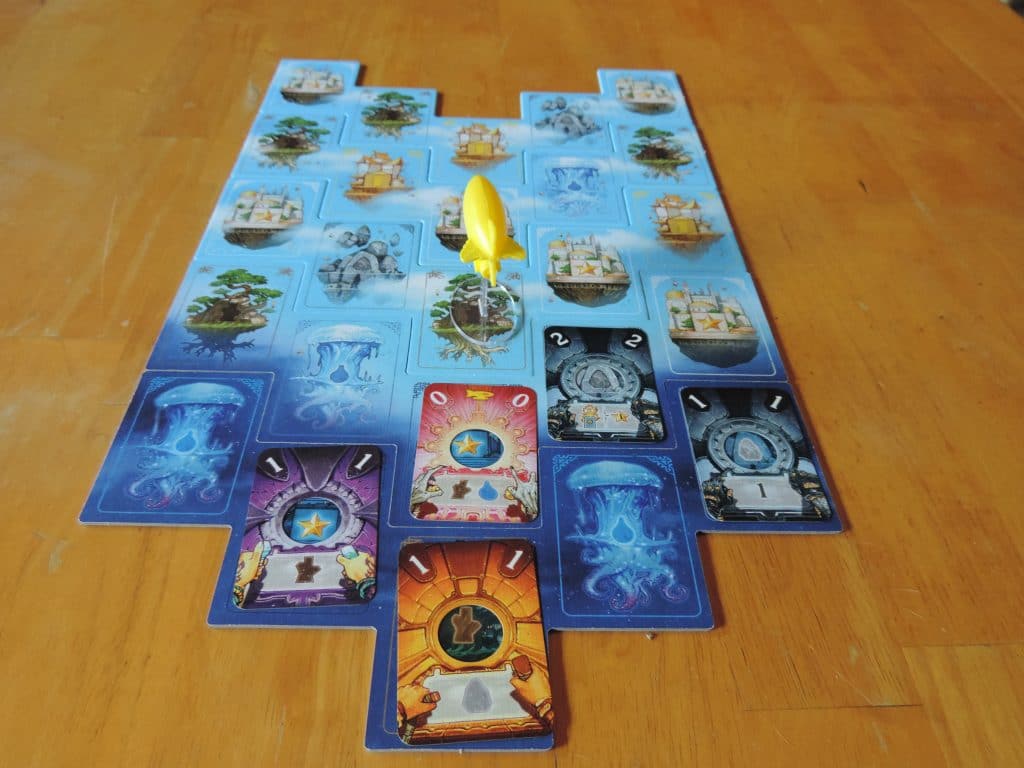
![]()
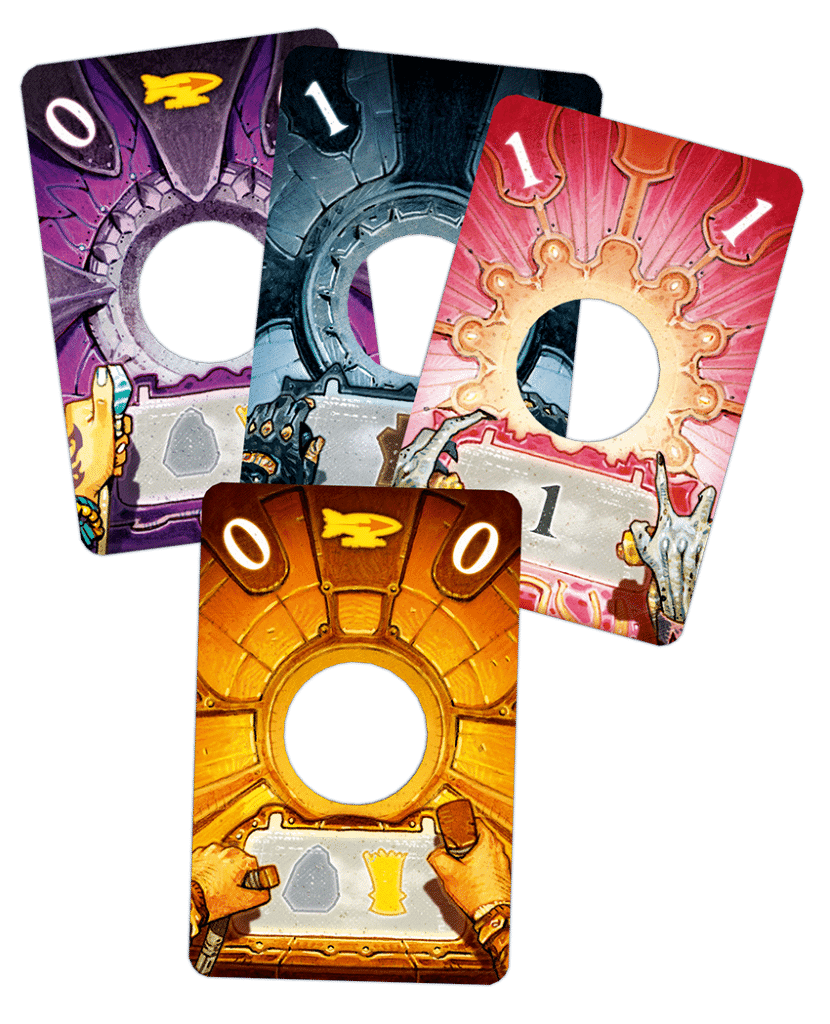
The different hands at the controls of each deck is a neat touch!
Staking our C.L.A.I.M. on Solenia
 Components
Components
Oh, Lord, where to begin?! Everything you get in Solenia‘s box is downright gorgeous, and many of the components are totally unique. The cards, for instance, have holes in the middle of them so that, when placed, you can easily see what resource you’re due.
A small detail I didn’t notice immediately but totally love on the cards: Each color has a unique pair of hands at the controls!
The game board is the star, though. Such a cool mechanic! Picking up and flipping the tiles changes a night tile to a day tile or vice versa. Placing them at the opposite end of the playing area means that you’ll cycle through the day and night hemispheres without pulling a U-turn with the airship. It is a really smart and well done component and mechanic.
The only thing I’d have liked to see done differently are the gold star tokens. Having the values printed on both sides of the cardboard would have kept us from having to flip facedown tokens to determine their value. There isn’t a game mode wherein the tokens need to be randomized or placed facedown, so I’m not sure why the numbers aren’t on both sides.
![]()
Orange places the 0 value card which triggers the Powers on the bottommost board tile which is then flipped and moved to the top. 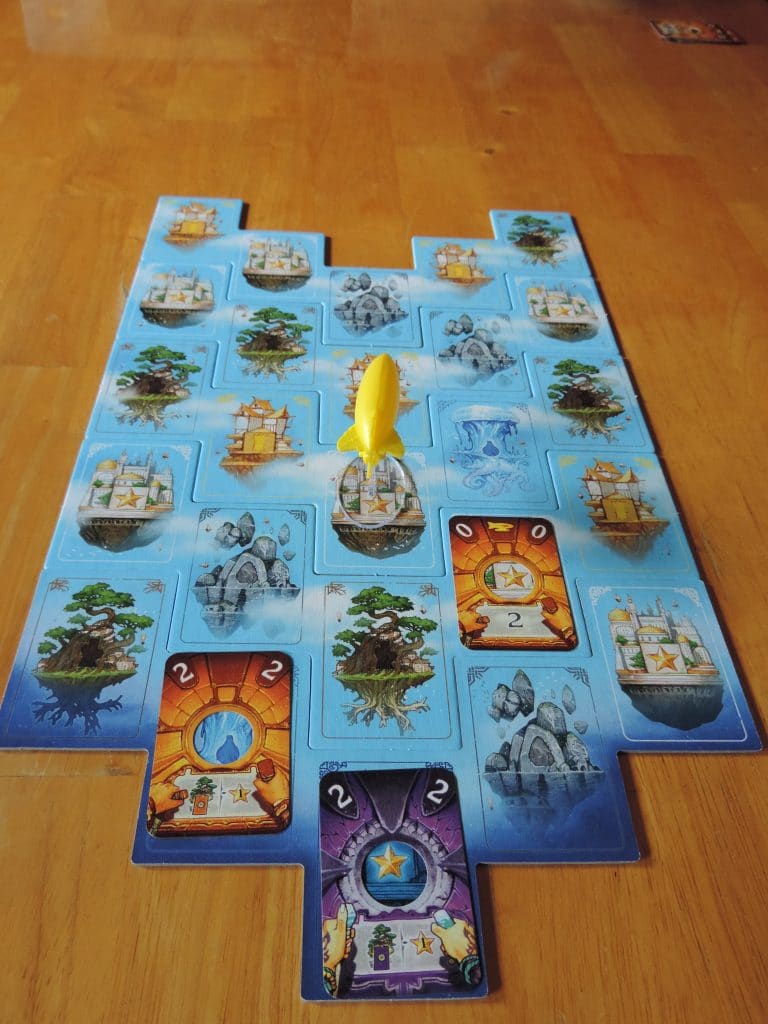
The airship moves up a space, as well. This is the resulting board state.
 Luck
Luck
There is a bit of luck element in the card draw, of course, and the solo mode features a dice mechanic that will determine where your virtual opponent will place his card. The virtual opponent can also snatch high value deliveries right out from under you by merit of that dice mechanic, which can be frustrating if you’ve been saving up your resources for it, but the same is true of real opponents!
There are a lot of strategic decisions to be made in Solenia. Since all of your cards have the potential to net you valuable resources at least once (even the 0 value cards that do not give you any immediate resources). In most cases it’stwice because of what is referred to as the Power of the card which triggers when the airship advances and that card is on the bottommost board tile, long term gains can be strategically made. You can also spend a resource to bend the adjacency rules a bit, the rewards of which might far outweigh the cost!
Cities become hot commodities too, as you can’t visit a city (or any space on the board, for that matter) that already has a player card resting on it. Since they’re the only means of completing deliveries, sometimes your best play may be to block another player from using a city; even if it means you complete a delivery of a lower value than you’d wanted. Plays for both resources and cities gives Solenia a bit of an area- or board control feel.
 Aesthetics
Aesthetics
Have I mentioned yet that Solenia is beautiful? Man, I really should have thought to put that in the title to the post. Solenia easily ranks as one of the prettiest games I’ve got on my shelves – if not the prettiest. The water color vibes are strong with this one.
 Interest
Interest
There are a lot of play variations for Solenia, and that is always a plus in my book. The player boards themselves have two different sides that change the way the game plays by modifying bonuses and VP. There are also tokens that allow you to customize your player board, which gives Solenia a tiny bit of an engine-building feel.
I think the ability to customize your deck somehow would be a fun addition to the game, as well, but at the same time I understand how that could needlessly complicate a game that is spot on mechanically speaking.
 Mood
Mood
Solenia is a delightful play. Simple enough for the most casual of gamers, but also packing a ramp of difficulty that’ll please those who like their games a little more complex. I dig that. That kind of sliding scale of complexity makes it much more widely accessible and, of course, is no accident.
Turns progress fairly quickly given that each player can only play one card, so you’re not left sitting idle for long. And the constantly changing board state, between card placements, airship movement, and tile relocations, means that you’re mentally engaged with every turn anyway as your strategy has to evolve with every evolution.
Dirigible Delivery Never Looked So Good
Solenia is light and enjoyable. It is unlikely, I think, to carry a tabletop gaming night all by itself, but it definitely makes for a solid addition to a slate of games on a night like that. Easy to teach, set up, and play, but ultimately lacking that drive to play it over and over again in succession.
That sounds more negative than it is! I’m just being honest about its level of replayability; it doesn’t shine on the back-to-back plays front. But it is a worthy addition to a gaming library, for sure; one that will, over time, see lots of play.
You can snag Solenia from Amazon here!
[Disclosure: Nerds on Earth was provided a copy of Solenia by Asmodee in exchange for an honest review.]



